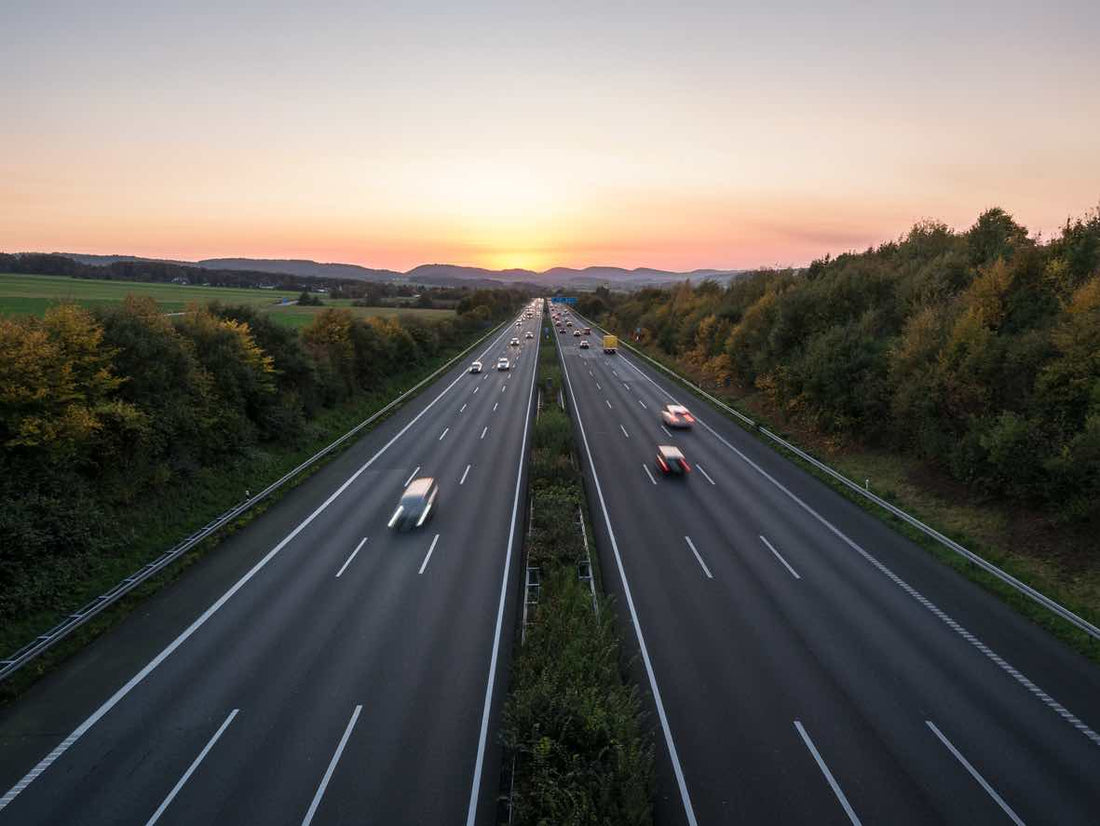Here in the SF Bay Area recently passed measures are funding transportation infrastructure improvements in the regions freeways. I have watched the progress with great interest in particular noting the installation of improved anti-glare countermeasures on the major freeways.
Anti-glare countermeasures in roadway design include a variety of design strategies and tools that transportation engineers can deploy so that headlight glare is less bothersome for night time drivers. Unfortunately some of these countermeasures require advance planning of the roadway, however others can be "retrofitted" onto an existing roadway system.
Here are a few of the design ideas that you might encounter in today's roadways:
Separation of Lanes
Particularly effective for freeways and boulevards with plenty of space, placement of a wide separation zone between opposing lanes of traffic reduces night-time headlight glare for drivers simply by increasing the amount of lateral displacement between oncoming cars.
Of course, the increased separation also has immediate safety benefits and enables other desirable features such as emergency vehicle turn-arounds.
Unfortunately the main issue with separation of lanes is the need for a greater amount of space. In many tight urban corridors it is simply not possible to design roadways with separated lanes.
Independent Lane Routing
Similar to separation of lanes but on steroids, independent lane routing is achieved when the two directions of a highway are not only separated by a lateral distance, but also varied in either direction or elevation. This can be highly effective as not only can the lateral distance between cars be increased but with changes in elevation and/or direction of travel headlight glare can be nearly completely eliminated.
Independent lane routing works well in hilly or mountainous terrain. Unfortunately it is not commonly encountered due to the technical difficulties in routing separate lanes and the increased amount of space required for the roadways.
Elevated Lane Barrier Walls
A common technique found in urban freeways with closely spaced lanes are lane barrier walls. Typically formed from concrete and between 3-5 feet high, these barriers increase safety by reducing the probability of head-on crashes on a freeway. When placed an an appropriate height, the barriers can reduce the amount of headlight glare that transmits to the opposing lane of traffic.
Historically lane barrier walls have been installed primarily for the crash-reduction goal, without consideration of their role in reducing headlight glare. However, modern installations and retrofitting of lane barriers has seen an increase in lane barrier height which improves their glare reduction function.
Unfortunately lane barriers cannot be increased beyond a certain amount of height without creating other potential risks such as hindering access by emergency first responders.
In addition, even with lane barrier height increased to the maximum acceptable limits, it is still not enough to block glare from "lifted" vehicles (typically pickup trucks) and, are less effective for drivers in high driving-position vehicles such as the extremely popular SUV form factor, pickup trucks and commercial vehicles.
Slatted Lane Fences
Slatted lane fences address several issues with elevated lane barriers. This glare countermeasure consists of a type of fence where the orientation of the slats is perpendicular to the fence line (versus a normal fence where the slats are parallel to the line). By oriented the slats in this way, they can act as an effective glare blocking shield, but without the downsides of a normal fence such as the tendency to be damaged or fall over in high wind conditions. The slats enable wind to pass easily through the fence perpendicularly, while blocking light from the point of view of car drivers in opposing lanes of traffic.
In addition, the slats can be space far apart enough to enable people (such as emergency first responders) to climb over the lane barrier and through the fence easily.
While slatted lane fences are indeed very effective, they are unfortunately not widely adopted on urban freeways. Perhaps due to lack of budget or awareness by city planners of the issues that night-time glare can cause!
Have you noticed any other design elements in urban roadways specifically for glare reduction? Email us your comments or questions at support@nightbirds.vision.

